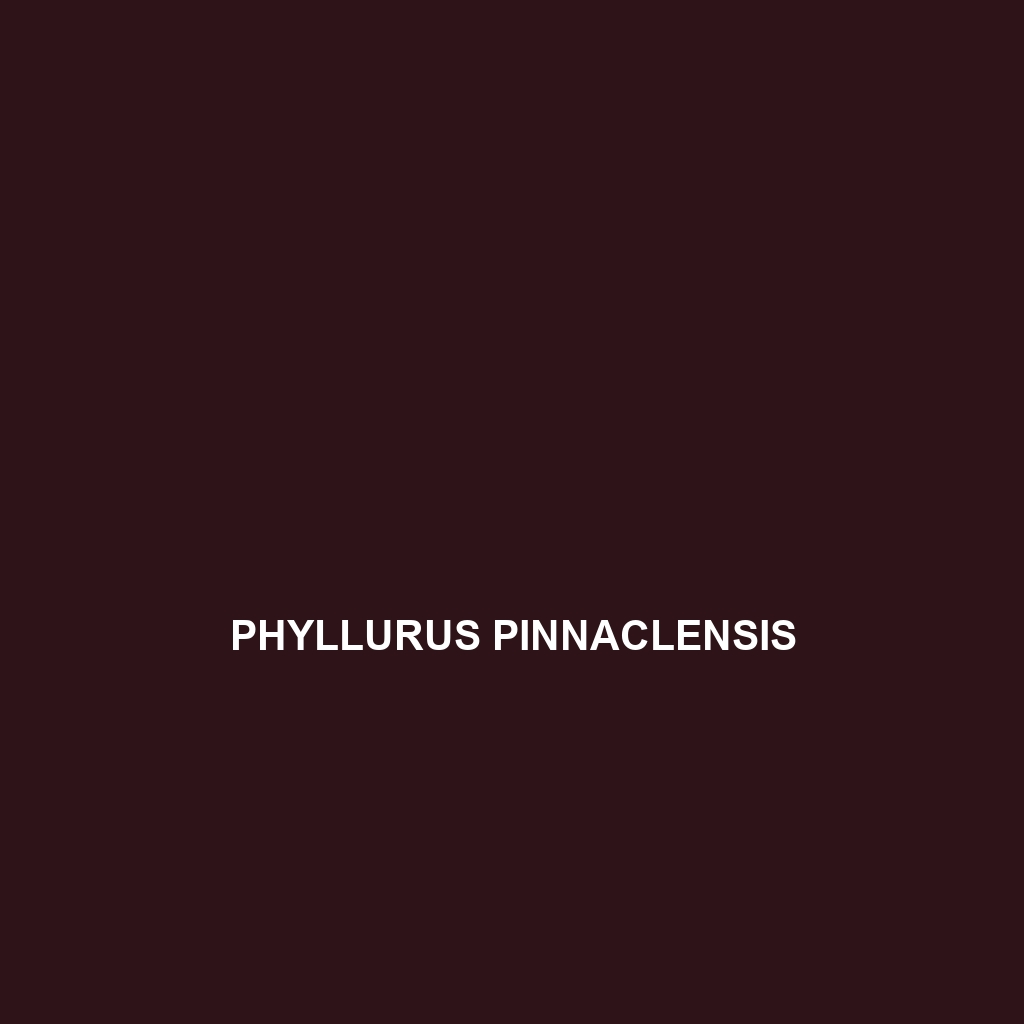Common Name
Phyllurus pinnaclensis
Scientific Name
Phyllurus pinnaclensis
Habitat
Phyllurus pinnaclensis, commonly known as the Pinnacle Leaf-tailed Gecko, primarily inhabits the lush, verdant rainforests of northeastern Queensland, Australia. These geckos thrive in humid tropical climates, often found in areas characterized by dense foliage that provides a rich environment for them to camouflage and shelter from predators. The typical environmental conditions include stable temperatures, high humidity levels, and abundant rainfall, making these rainforests a crucial habitat for their survival. Notably, Phyllurus pinnaclensis is often associated with rocky outcrops and tree hollows, where they can easily hide and hunt for prey.
Physical Characteristics
The Phyllurus pinnaclensis measures approximately 12 to 15 centimeters in length, with a stout, flattened body that aids in their camouflage among the leaves and bark of their rainforest habitat. Their unique coloration features a combination of earthy browns, greens, and yellows, allowing them to blend seamlessly with their surroundings. One of the most distinctive features of this species is its tail, which is leaf-shaped and contributes to its remarkable cryptic appearance, enabling it to evade predators efficiently. Additionally, their large, round eyes provide excellent nocturnal vision, which is paramount for their hunting activities.
Behavior
Phyllurus pinnaclensis displays fascinating nocturnal behavior, emerging at night to hunt and interact with conspecifics. This gecko is predominantly solitary but can display territorial behaviors, especially in males. During the mating season, males engage in elaborate courtship displays, which may include head-bobbing and tail-waving to attract females and assert dominance over rival males. Their ability to remain motionless for extended periods enhances their predatory strategy, allowing them to ambush unsuspecting prey. This species is also known for its unique ability to shed its tail when threatened, a defense mechanism that allows it to escape from predators while the detached tail serves as a distraction.
Diet
The diet of Phyllurus pinnaclensis primarily consists of various insects, making them insectivores. They particularly relish crickets, beetles, and other small arthropods found within their habitat. Their hunting method involves active foraging at night, where they utilize their keen eyesight and camouflage to stalk and ambush prey. The geckos play a vital role in regulating insect populations in their ecosystem, thus contributing to the overall balance of their rainforest habitat.
Reproduction
The breeding cycle of Phyllurus pinnaclensis occurs in the warmer months, with a peak in activity during the rainy season. Mating rituals commence with males performing elaborate displays to entice females. After a successful courtship, females typically lay two eggs, which they carefully conceal in a safe location, such as leaf litter or under rock crevices. The incubation period lasts approximately 60 to 90 days, after which hatchlings emerge fully formed and miniature versions of their parents. Parental care is minimal, as the young are independent from birth, relying on their camouflage and stealth for survival.
Conservation Status
Currently, Phyllurus pinnaclensis is listed as vulnerable due to habitat loss primarily caused by deforestation and human encroachment. The ongoing destruction of their rainforest habitat poses significant threats to their population. Conservation efforts are in place, focusing on habitat preservation and restoration initiatives to protect this unique species. Increased public awareness and legal protections are crucial for ensuring that Phyllurus pinnaclensis continues to thrive in its natural environment.
Interesting Facts
One of the most intriguing aspects of Phyllurus pinnaclensis is its remarkable ability to mimic the appearance of leaves, which not only serves for effective camouflage but also helps them evade predators. This gecko is often mistaken for dead leaves when stationary, enhancing its survival prospects in the wild. Moreover, the Pinnacle Leaf-tailed Gecko plays a significant role in the folklore of the indigenous people in the region, emphasizing its cultural importance beyond its ecological role.
Role in Ecosystem
Phyllurus pinnaclensis plays an integral role in its ecosystem as both a predator and prey species. By controlling insect populations, it contributes to the ecological balance within the rainforest. Furthermore, as a part of the food web, they serve as prey for larger predators, such as birds of prey and snakes. Their presence indicates a healthy ecosystem, as the health of reptile populations is often a reflection of the overall health of their habitats. Through these interactions, the Pinnacle Leaf-tailed Gecko is a key player in maintaining the biodiversity and stability of rainforest ecosystems.
This HTML formatted content aims to deliver a thorough overview of Phyllurus pinnaclensis, including essential information on its habitat, physical traits, behavior, dietary habits, reproductive cycle, conservation status, interesting facts, and ecological role, with a focus on SEO optimization to enhance visibility.
